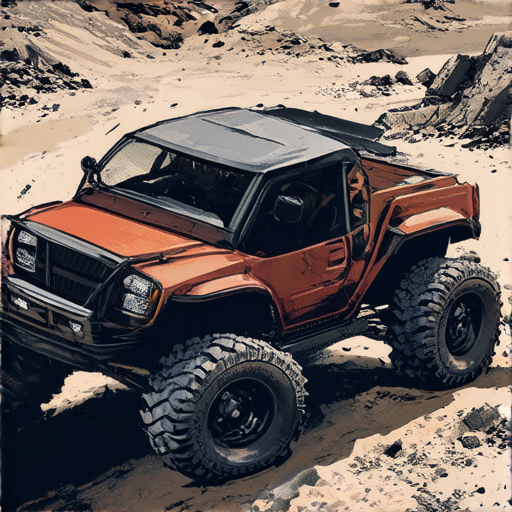When it comes to ensuring safe and stylish driving, one often overlooked aspect of vehicle maintenance is the array of car wheel accessories available on the market. These essential components play a crucial role in enhancing both the performance and appearance of your vehicle, from the humble hubcap to the sophisticated wheel strut. By understanding the different types of hubcaps, the importance of proper wheel alignment, and the various other components that make up a vehicle’s wheel system, drivers can make informed decisions about which accessories to invest in and how to maintain their vehicles for optimal safety and style.

The Thing That Holds the Wheel on a Car
The wheel hub assembly, also known as the wheel hub bearing, hub assembly, or wheel hub unit, is the part of a car that attaches the wheel to the vehicle.
- Main Components:
- Wheel Hub Bearing: A bearing that supports the weight of the vehicle and allows the wheel to rotate smoothly.
- Housing: A metal casing that contains the wheel hub bearing and provides structural support to the wheel.
- Hub Cap: A cover that fits over the wheel hub to protect it from dirt and debris.
- Types of Wheel Hubs:
- Full-Floating Wheel Hubs: These hubs allow the wheel to float freely, reducing stress on the bearings and increasing durability.
- Non-Floating Wheel Hubs: These hubs are attached to the axle and do not allow the wheel to float freely.
- Importance of Proper Wheel Hub Maintenance:
- Regular lubrication of the wheel hub bearings can extend their lifespan and prevent premature wear.
- Cleanliness of the wheel hub area is crucial to prevent damage to the bearings and surrounding components.
- Choosing the Right Wheel Hubs for Your Vehicle:
- Consider the type of driving you’ll be doing and choose a wheel hub that suits your needs.
- Select a wheel hub that matches the specifications of your vehicle’s manufacturer recommendations.
-
Tire
The tire is the outermost component of a wheel, responsible for making contact with the road surface.
It consists of several layers, including the tread, sidewall, and bead.
The tread is the rubber portion of the tire that contacts the road surface, while the sidewall provides support and stability.
The bead is the ring-shaped component that holds the tire in place on the rim.
-
Rim
The rim is the metal ring that the tire sits on.
It provides structural support to the tire and helps to distribute the weight of the vehicle.
The rim also serves as a mounting point for the tire and other wheel components.
-
Hub
The hub is the central component of a wheel, connecting the rim to the axle.
It provides a mounting point for the bearings and other wheel components.
The hub also helps to transmit rotational forces from the engine to the wheels.
-
Barrel
The barrel is the curved portion of the wheel that gives it its shape.
It provides structural support to the wheel and helps to distribute the weight of the vehicle.
The barrel also serves as a mounting point for the tire and other wheel components.
-
Bearing
The bearing is a component that allows the wheel to rotate smoothly.
It consists of two rings, one attached to the hub and the other to the axle.
The bearing reduces friction between the wheel and the axle, allowing for smooth rotation.
-
Spokes
The spokes are the rods that connect the hub to the rim.
They provide structural support to the wheel and help to distribute the weight of the vehicle.
The spokes also serve as a mounting point for the tire and other wheel components.
-
Nut
The nut is a component that secures the wheel to the axle.
It consists of a threaded rod that screws into the hub.
The nut provides a secure connection between the wheel and the axle.
- The primary function of a fender is to protect the vehicle’s body from damage caused by road debris, such as rocks, branches, and other objects.
- Fenders also help to reduce noise levels by deflecting sound waves away from the vehicle.
- In addition to its protective functions, a fender can also enhance the overall aesthetic appeal of a vehicle by providing a sleek and streamlined appearance.
At Incubus Wheels, we offer a wide range of high-quality wheel hubs and accessories to suit various vehicle types and driving styles. Our team of experts can help you choose the perfect wheel hub for your needs and provide guidance on proper installation and maintenance.
We also recommend checking out other reputable brands in the market, such as Hennessy Performance and Vossen Wheels, for their expertise and products.
Components of a Wheel
The components of a wheel can vary depending on its intended application, but most wheels consist of several basic parts.
In addition to these basic components, wheels may also feature other components such as center caps, valve stems, and lug nuts.
These components work together to provide a safe and reliable ride, and are critical to the overall performance and durability of a vehicle.

What is a Car Wheel Guard Called?
A car wheel guard is commonly referred to as a fender.
Types of Fenders
There are several types of fenders available, including:
- Rear fenders: These are typically found on vehicles with a rear-wheel drive configuration and are designed to protect the rear tires and wheels.
- Front fenders: These are usually found on vehicles with a front-wheel drive configuration and are designed to protect the front tires and wheels.
- Side fenders: These are often found on vehicles with a mid-engine or rear-engine configuration and are designed to protect the side tires and wheels.
Importance of Fenders
Fenders play a crucial role in maintaining the structural integrity and safety of a vehicle.
- They help to prevent damage to the vehicle’s body and paintwork.
- They reduce the risk of injury to occupants in the event of a collision.
- They also contribute to improved fuel efficiency by reducing wind resistance.
Conclusion
In conclusion, a car wheel guard is simply known as a fender, which serves multiple purposes, including protection, aesthetics, and functionality.

What is a Car Wheel Brace?
A car wheel brace, also known as a lug wrench or tire iron, is a tool used to loosen and tighten lug nuts on automobile wheels.
- In the UK and Australia, it is commonly referred to as a wheel brace.
- The primary function of a car wheel brace is to provide leverage and torque to remove or install lug nuts securely.
Types of Car Wheel Braces:
There are various types of car wheel braces available, including:
- Screwdriver-style wheel braces
- Socket-style wheel braces
- Tire irons with interchangeable sockets
Importance of Using a Proper Car Wheel Brace:
Using a proper car wheel brace is crucial for safe and efficient wheel changes.
- It helps prevent damage to the wheel stud and surrounding area.
- Ensures secure tightening of lug nuts, which is essential for road safety.
Choosing the Right Car Wheel Brace:
When selecting a car wheel brace, consider the following factors:
- Type of vehicle and wheel size
- Material and durability of the tool
- Ergonomics and comfort during use
Incubus Wheels Recommendations:
We recommend using high-quality car wheel braces from reputable manufacturers, such as:
These tools offer excellent performance, durability, and ease of use, making them ideal for professionals and DIY enthusiasts alike.
What Is A Wheel Spacer?
A wheel spacer is an essential component in the world of custom wheel design and car modification.
-
We at Incubus Wheels specialize in providing high-quality wheel spacers that can elevate your vehicle’s appearance and performance.
-
A wheel spacer is essentially an aluminum disc that fits over a car’s wheel hub, pushing the wheel outward from the body of the vehicle.
Benefits Of Using Wheel Spacers
-
Improved clearance: By increasing the distance between the wheel and the hub, wheel spacers provide better clearance for larger brake calipers and wider tires.
-
Enhanced aesthetics: Wheel spacers can give your vehicle a unique and aggressive look, making it stand out from the crowd.
-
Increased stability: By moving the wheel further away from the hub, wheel spacers can improve the overall stability of your vehicle, particularly during cornering or braking.
Types Of Wheel Spacers
-
Hub-centric wheel spacers: These spacers have a center hole that matches the diameter of the wheel hub, providing a secure fit and minimizing the risk of vibration or movement.
-
Non-hub-centric wheel spacers: These spacers do not have a center hole and rely on the wheel’s lug nuts to secure them in place.
Choosing The Right Wheel Spacer
When selecting a wheel spacer, consider factors such as:
-
The type of vehicle you own and its intended use.
-
The size and style of the wheel you want to install.
-
The level of clearance required for your brake calipers and wider tires.
Why Choose Incubus Wheels?
At Incubus Wheels, we pride ourselves on providing high-quality wheel spacers that meet the needs of our customers.
-
Our team of experts has extensive knowledge of custom wheel design and car modification.
-
We offer a wide range of wheel spacers to suit various vehicles and applications.
-
Our products are made from durable materials and are designed to last.
Learn More About Our Products And Services
Understanding Wheel Struts
A wheel strut is a crucial component of a vehicle’s suspension system, playing a vital role in maintaining stability and ride comfort. As a car enthusiast, I’m excited to dive into the world of wheel struts and explore what makes them tick.
What is a Wheel Strut?
A wheel strut is essentially a type of shock absorber that connects the wheel to the vehicle’s frame. Its primary function is to absorb bumps and vibrations from the road, allowing the vehicle to maintain its balance and stability. In addition to shock absorption, wheel struts also play a critical role in controlling the movement of the suspension components, ensuring smooth and predictable handling.
Types of Wheel Struts
There are several types of wheel struts available, each with its unique characteristics and applications. Some common types include:
- MacPherson Struts: These are the most common type of wheel strut, featuring a coil spring and a shock absorber integrated into a single unit.
- Cross-Struts: Also known as A-arms, these struts connect the wheel to the frame via a cross-member, providing added stability and support.
- Twin-Tube Struts: These struts feature two separate tubes, one for the shock absorber and the other for the spring, offering improved damping and control.
Importance of Wheel Struts
Wheel struts are essential for maintaining a safe and comfortable driving experience. Without proper functioning wheel struts, vehicles can become unstable, leading to reduced handling and increased risk of accidents. Regular maintenance and replacement of worn-out wheel struts are crucial to ensure optimal performance and extend the lifespan of the vehicle.
Choosing the Right Wheel Struts
When selecting wheel struts, consider factors such as vehicle weight, driving style, and terrain. Different types of wheel struts cater to various needs, so it’s essential to choose the right ones for your vehicle. Consult with a professional mechanic or auto technician for personalized recommendations.
Maintenance and Replacement
Regular inspections and maintenance are vital to extending the life of wheel struts. Signs of wear and tear include oil leaks, noise, and vibration. Replacing worn-out wheel struts ensures optimal performance, safety, and fuel efficiency. Consider upgrading to high-performance wheel struts for improved handling and responsiveness.
Conclusion
In conclusion, wheel struts are a critical component of a vehicle’s suspension system, responsible for maintaining stability, ride comfort, and handling. Understanding the different types of wheel struts, their importance, and how to choose the right ones can help you make informed decisions when it comes to maintaining and upgrading your vehicle. By prioritizing regular maintenance and replacement, you’ll enjoy a safer, smoother, and more enjoyable driving experience.

0 Comments